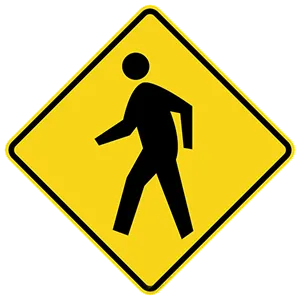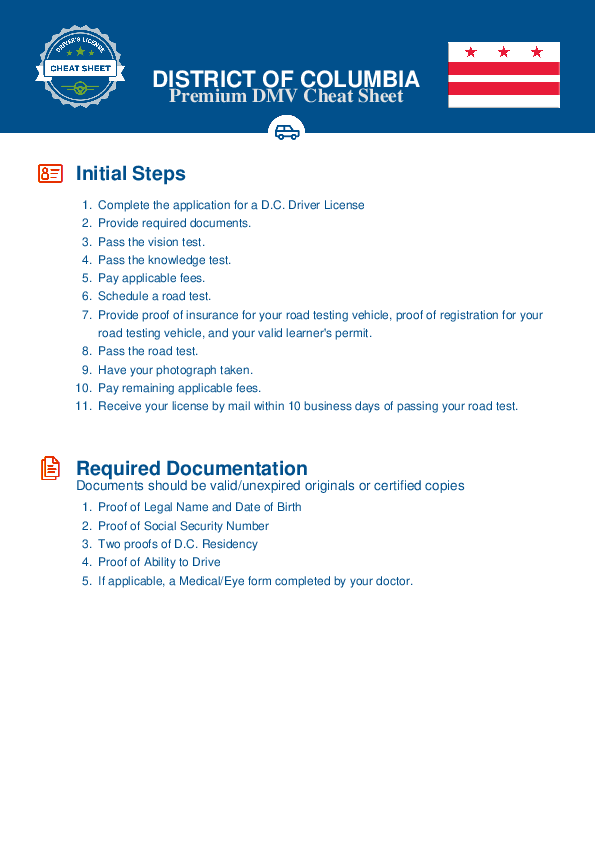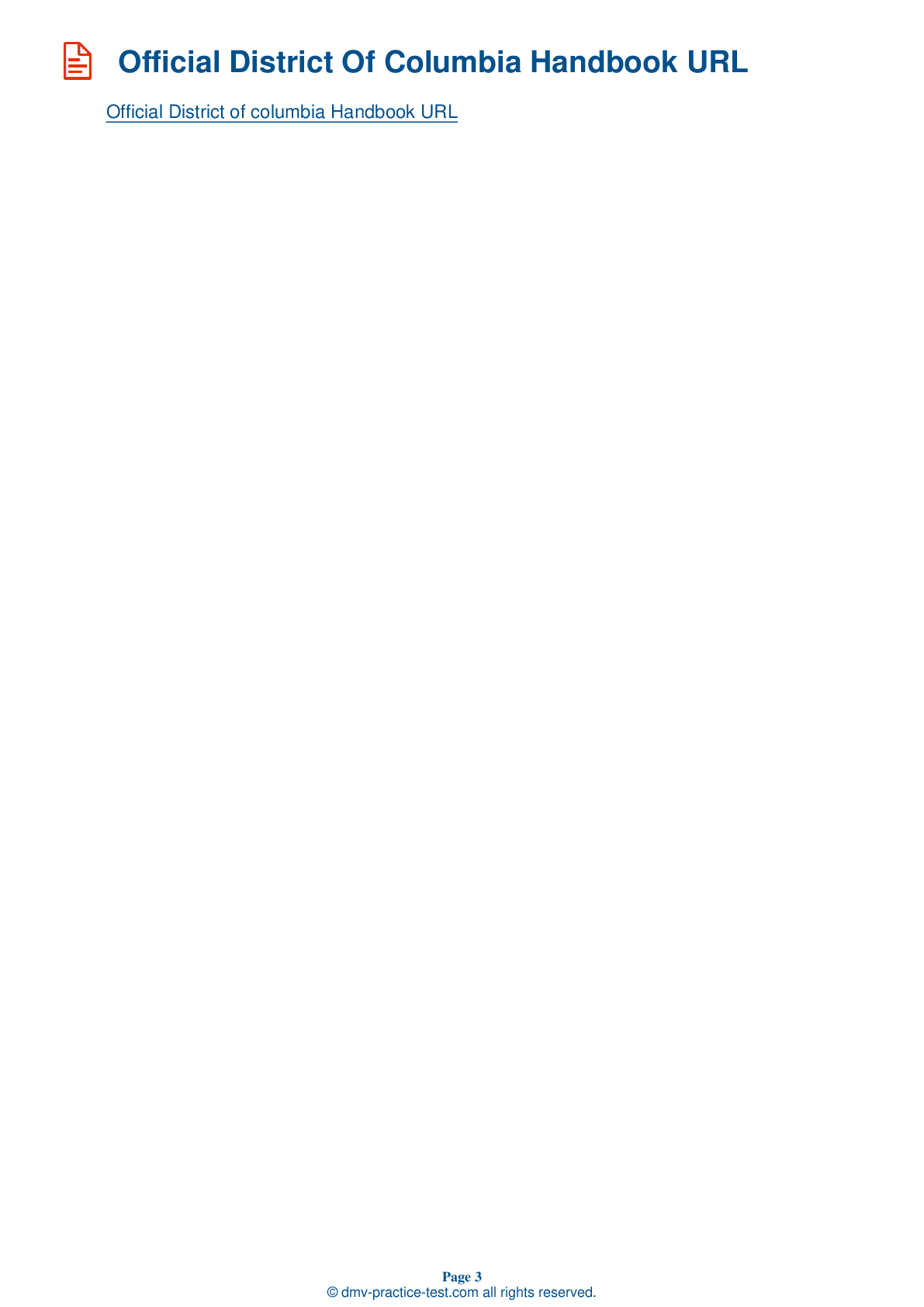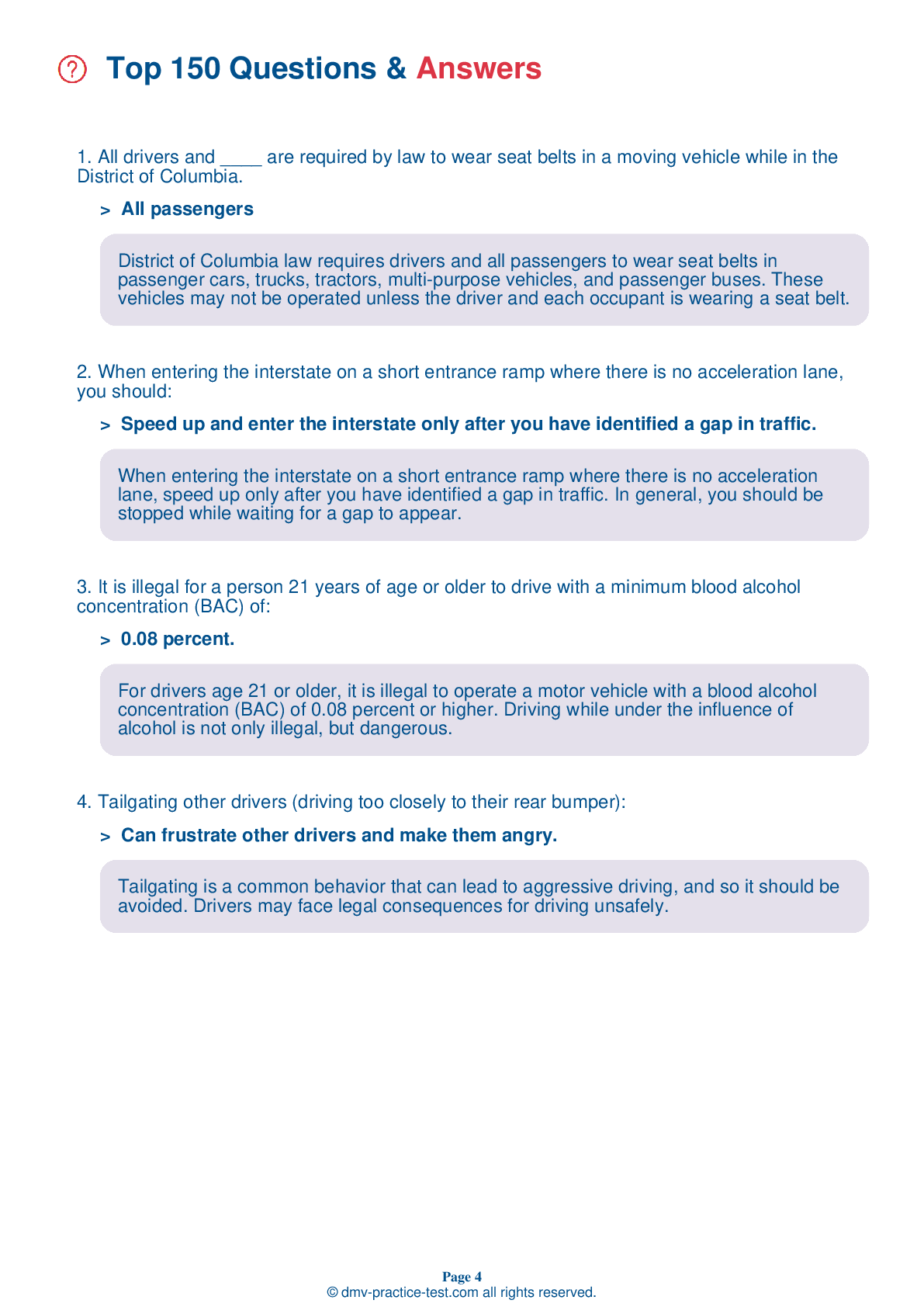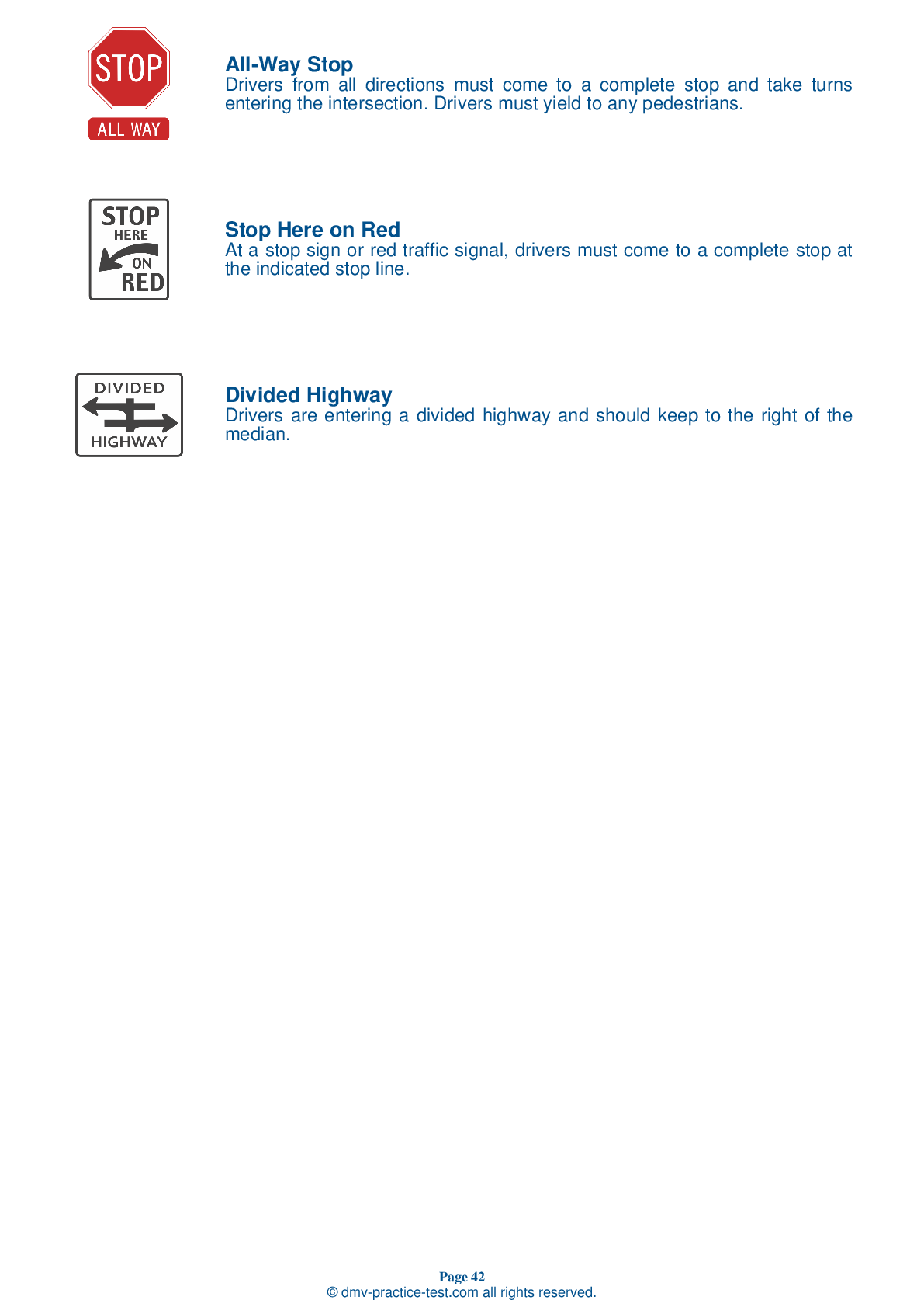FREE District Of Columbia DMV Practice Test #16 Page 3 of 3
This set of District Of Columbia DMV practise tests was been updated for January 2025. It includes questions based on the District Of Columbia Driver Handbook's most significant traffic signs and laws for 2025. Use actual questions that are very similar (often identical!) to the DMV driving permit test and driver's licence exam to study for the DMV driving permit test and driver's licence exam.
On the practise exam, each question gets a tip and explanation to help you remember the concepts. The written component of the official DMV test will include questions about traffic rules, traffic signs, and driving statutes, as well as information from the Driver Handbook.
To achieve the required passing grade, you must correctly answer 20 of the 25 questions. Take our DMV practise exam to help you prepare for your District Of Columbia instruction permit or driver's licence.
The DMV exam is available in several languages.
Using any form of testing help will result in an automatic fail, and the DMV may take further action against your driver's licence, so avoid it.
17 . You are on the freeway and traffic is merging into your lane. You should:
When traffic permits, you should make room to allow vehicles to merge into your lane.
18 . If stopped by law enforcement while driving a motor vehicle in the District of Columbia, you are responsible for providing your valid driver license, vehicle registration, and proof of insurance.
If stopped by law enforcement while driving a motor vehicle in the District of Columbia, you will be responsible for providing your valid driver license, vehicle registration, and proof of insurance. Failure to comply may result in a fine and/or arrest.
19 . When a school bus is stopped ahead on your side of the road with its red lights flashing, you must:
The flashing overhead lights and stop arm on a school bus will be activated when the bus is stopped to load or unload students. If approaching a bus using these signals, you may not proceed until the red lights have stopped flashing and the stop arm has been retracted. Never pass a school bus that is dropping off or picking up students.
20 . This sign means you are approaching a railroad crossing that does not have a signal. You should:
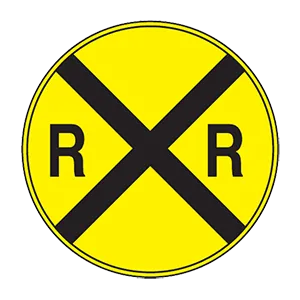
At a railroad crossing marked with this sign, a driver should look both ways, listen for any trains, and be prepared to stop if any trains are nearby. Never try to outdrive an oncoming train.
21 . You are involved in an accident and another person is injured. You should:
After an accident, do not move the injured unnecessarily. Unskilled handling can make serious injuries out of minor ones. Keep the injured warm until skilled help arrives. If there is severe bleeding, attempt to stop the flow of blood with direct pressure.
22 . This sign means:
